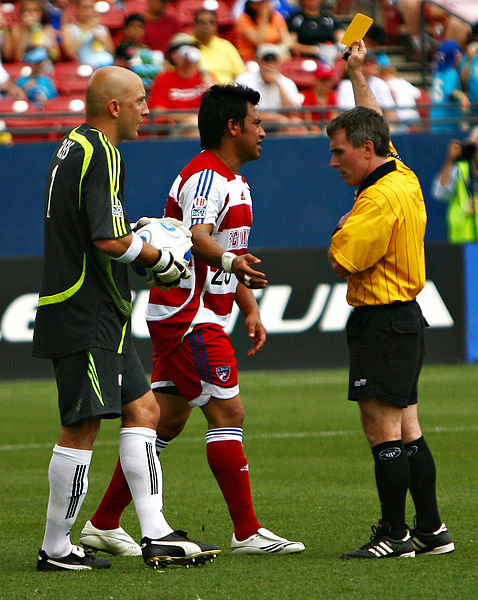What Does The Yellow Card Mean In Soccer?
Posted by Alex on 24th May 2014
Shop Prescription Glasses for Soccer

If you've spent any time watching soccer – whether on television or attending an official game – you may recall seeing a referee raise a yellow-colored card at some point. Nine out of ten times, nothing happens to the player who receives the card, as the game continues without further interruption. However, in some instances, the player will be thrown out by an officiating referee. If you're still trying to grasp the concept of yellow cards in soccer, keep reading for a more thorough explanation of when and how they are used.
The yellow card is used in soccer to indicate a penalty on a specific player. Famed British referee Ken Aston first introduced the idea of using color-coded penalty cards back in the mid 1960s, campaigning for FIFA to embrace the “yellow means caution and red means stop” card system. The first time penalty cards were actually used in the FIFA World Cup occurred in 1970.
Generally speaking, the yellow card is more of a warning, as the player may continue to play the game without suffering from any consequence. If a referee pulls two yellow cards on the same player, he or she is thrown out of the game and the team is forced to play “short” for the remaining duration.
Red cards indicate a more serious offense, such as tackling a player or aggressive slide kicks and are equal to two yellow cards, thus, throwing the player off the game.
The yellow penalty card may be pulled when a player is caught doing one of the 7 following actions:
1.Unsporting behavior: Handling the ball with the purpose of preventing the opposing team from gaining possession, faking an injury, or intentionally tripping an opponent.
2.Shows dissent by word or action: Making hand gestures, cursing, or otherwise taunting an opponent verbally and/or physically.
3.Infringed upon the Laws of the Game: Not abiding by the official game rules.
4.Delay of game. Intentionally waiting during the restart of the play.
5.Fail to respect distance of corner or free kick when play is restarted: Player attempts to jump in front of a corner kick or free kick during restart.
6.Enters or renters the field without the ref's permission: Player runs on the field while game is still in play without the officiating ref's permission.
7. Leaves the field of play without the ref's permission: Player runs off the field while the game is still in play without the officiating ref's permission(note: being pushed or knocked out by another player does not count).




